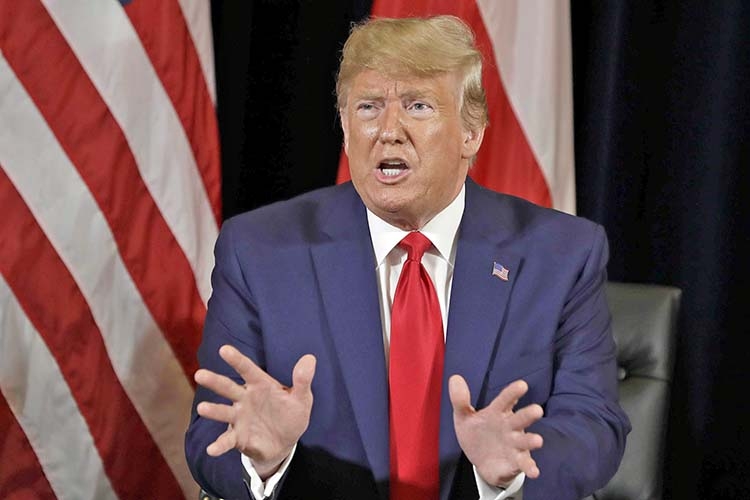Published: 02:05 AM, 13 January 2020
US-China trade deal a mixed success for Trump

President Donald Trump is set to sign a trade deal with China on Wednesday (Jan 15) that he will trumpet as a major victory, but it comes at a steep cost after a bitter two-year standoff between the world's two top economic powers.
"The hard issues between the United States and China are still outstanding," said Edward Alden, trade policy expert at the Council on Foreign Relations. But he acknowledged: "Politically, this does work pretty well for Trump" as he runs for re-election this year.
The White House can boast it has been "tough on China," and that "technically he's got a deal," something he promised voters in 2016, Alden said.At the very least, the truce has reassured markets, roiled by constant upheaval in 2018 and 2019 amid threats, counter-threats and waves of tariffs.
The current ceasefire also could help Trump on the campaign trail by giving the American economy a boost. As uncertainty eases, consumers would have greater reason to spend with confidence, and businesses might also move forward with investments that were put on hold over fears about how the conflict would play out.
Trump announced to great fanfare on New Year's eve that he would sign the "phase one" deal on Jan 15 in the White House. But it was not until Thursday that the Chinese Ministry of Commerce confirmed the visit of Vice Premier Liu He, who will be in Washington from Monday to Wednesday.
Details of the scope of the agreement have remained a mystery, however. "The whole document will be released Wednesday," Larry Kudlow, director of the National Economic Council, told reporters last Friday.
There will be "a lovely ceremony," he added, preceded the night before by a formal dinner and followed by a lunch. Kudlow dismissed criticism that the deal fell short of expectations, saying US negotiators won numerous concessions.
The White House has said the deal includes improvements on the technology transfers requirements that Beijing imposes on foreign companies, as well as better access to the Chinese market for financial services.
It also stipulates that Beijing will buy an additional US$200 billion (S$269.8 billion) in American products over a two-year period compared to 2017, including US$50 billion in agricultural goods.
In return, the Trump administration has called off new tariffs on Chinese-made goods like electronics and cell phones that were due to take effect last month, and cut in half those imposed on Sept 1 on US$120 billion in products.
But many tariffs remain in place, and the trade war has squeezed US businesses.The deal is a "mixed success" and comes at a price, said Eswar Prasad, a professor of trade policy at Cornell University and an expert on China.
"Trump has extracted some concessions from China and other US trading partners but at a significant cost to the US economy and with an erosion of the US' international standing as a trustworthy and reliable trading partner."The Chinese economy has slowed markedly, partly as a result of the trade war, but American manufacturing and farmers also have suffered.
And US manufacturing entered a recession in August. "There's been significant harm to American farmers and significant harm to the US manufacturing industry and the new purchase commitments by China are unlikely to undo that damage," Alden said.
One of Trump's main goals for launching the trade war was to reduce the US trade deficit and put an end to unfair trade practices, but trade experts doubt Washington can achieve significant structural changes from Beijing.Prasad said China is unlikely to yield on key demands from the Trump administration, such as substantially reducing state subsidies to companies.
Xu Bin, professor of economics and finance at the China Europe International Business School (CEIBS) in Shanghai, said the two sides can declare they have an agreement "that will be acceptable, (but) not a victory."
"I think essentially the fight between China and the US will continue as far as we can see, over the next few years, next 10 years, next 20 years, even further," veering between conflicts and truce.
---AFP, Washington




